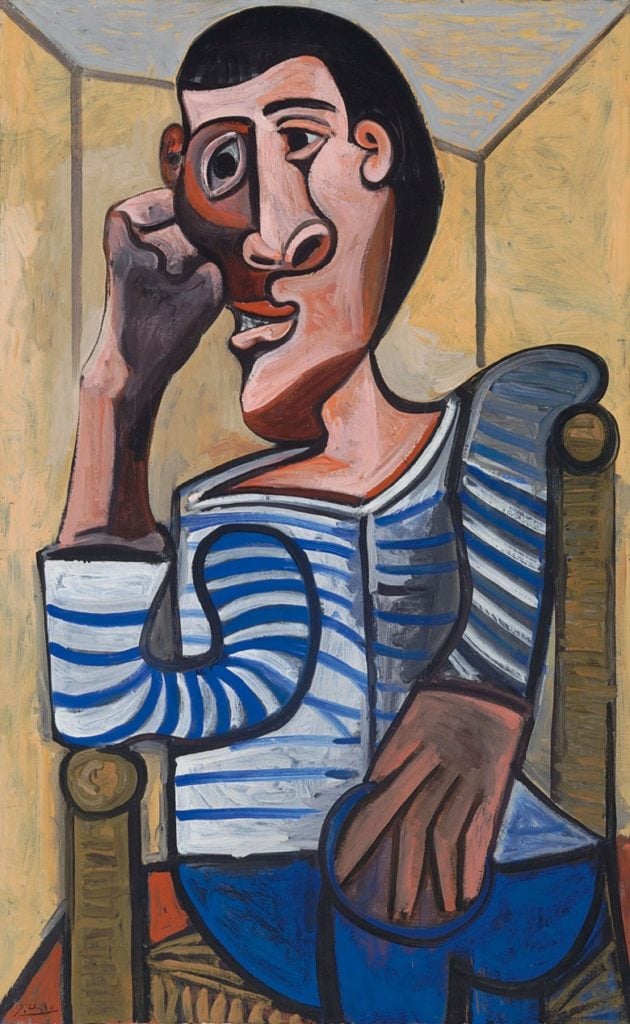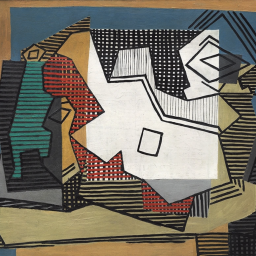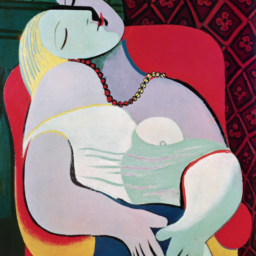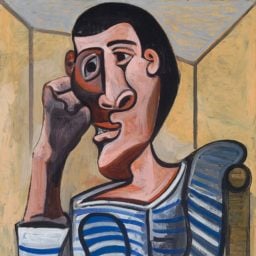Two years ago, casino mogul and art collector Steve Wynn withdrew a Pablo Picasso canvas on the eve of an auction at Christie’s New York after the painting was damaged, knocking a reported $20 million of the work’s value. Now, the insurance company that reimbursed Christie’s after the auction house paid Wynn is suing the contractor it blames for the costly accident that gashed a hole in the masterpiece.
The lawsuit, filed by Steadfast Insurance Co., is seeking $18.4 million in damages, plus legal fees, from T.F. Nugent, a family-run commercial painting business, reports Bloomberg.
The painting, Le Marin, was one of several high-profile works Wynn put up for sale in May 2018, shortly before announcing he would be setting up shop as an art dealer through a business dubbed Sierra Fine Art LLC. The 1943 self-portrait carried a third-party guarantee, and was expected to sell for at least $70 million. Then, as the auction house prepared to exhibit the work ahead of the sale, disaster struck.
An employee of T.F. Nugent, which had been hired to paint Christie’s galleries ahead of the exhibition, left an extension rod for a paint roller leaning up against one of the walls. According to the complaint, the rod wasn’t secured, and slipped and fell, crashing into Le Marin, which was resting on foam pads against the wall in preparation for installation. The rod tore a four-and-a-half-inch hole in the canvas.
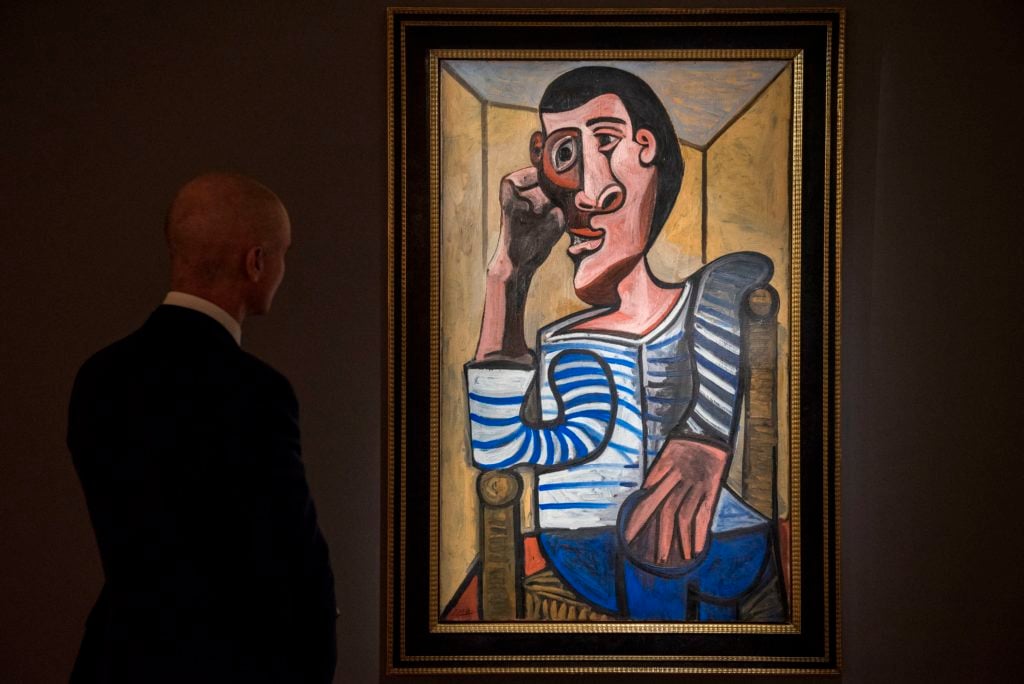
Pablo Picasso’s Le Marin (aka The Sailor) at Christie’s before the contretemps. Photo: PHILIP FONG/AFP/Getty Images
Following the incident, Christie’s had the work restored, spending $487,625 to close the gaping hole and the surrounding damage, a total area of seven inches long and two inches wide.
Steadfast hired two art experts to appraise the restored work and assess how much the accident had impacted its value. The lawsuit contends that the appraisers found that the painting had previously been worth up to $100 million, but that the accident had lowered its worth by 20 percent, or $20 million, “given the extent of the physical damage to the Le Marin, and the accompanying reputational damage.”
Based on that figure, Christie’s negotiated a settlement with Wynn’s company, Sierra Fine Art, paying out $18.74 million—money that was reimbursed by Steadfast, the auction house’s insurance company.

Steve Wynn attends The Broad’s inaugural dinner. Photo by Jerod Harris/Getty Images.
Steadfast’s lawsuit argues that “Le Marin was damaged due to the negligent and/or careless acts” on the part of T.F. Nugent, and that the painting company broke its oral contract with Christie’s by not fulfilling its “duty to act with reasonable care with respect to the performance of their duties to paint Christie’s galleries.” The insurance company contends that T.F. Nugent should reimburse it for the $18.74 expense incurred as a result of the painting company’s “negligence.”
Wynn, of course, once famously damaged a Picasso masterpiece in his collection, the 1932 portrait Le Rêve, by accidentally putting his elbow through it back in 2006. Luckily, the damage was repairable, and Wynn sold it to hedge-fund manager Steve Cohen for $155 million in 2013. (He did sue his insurance company first.)
